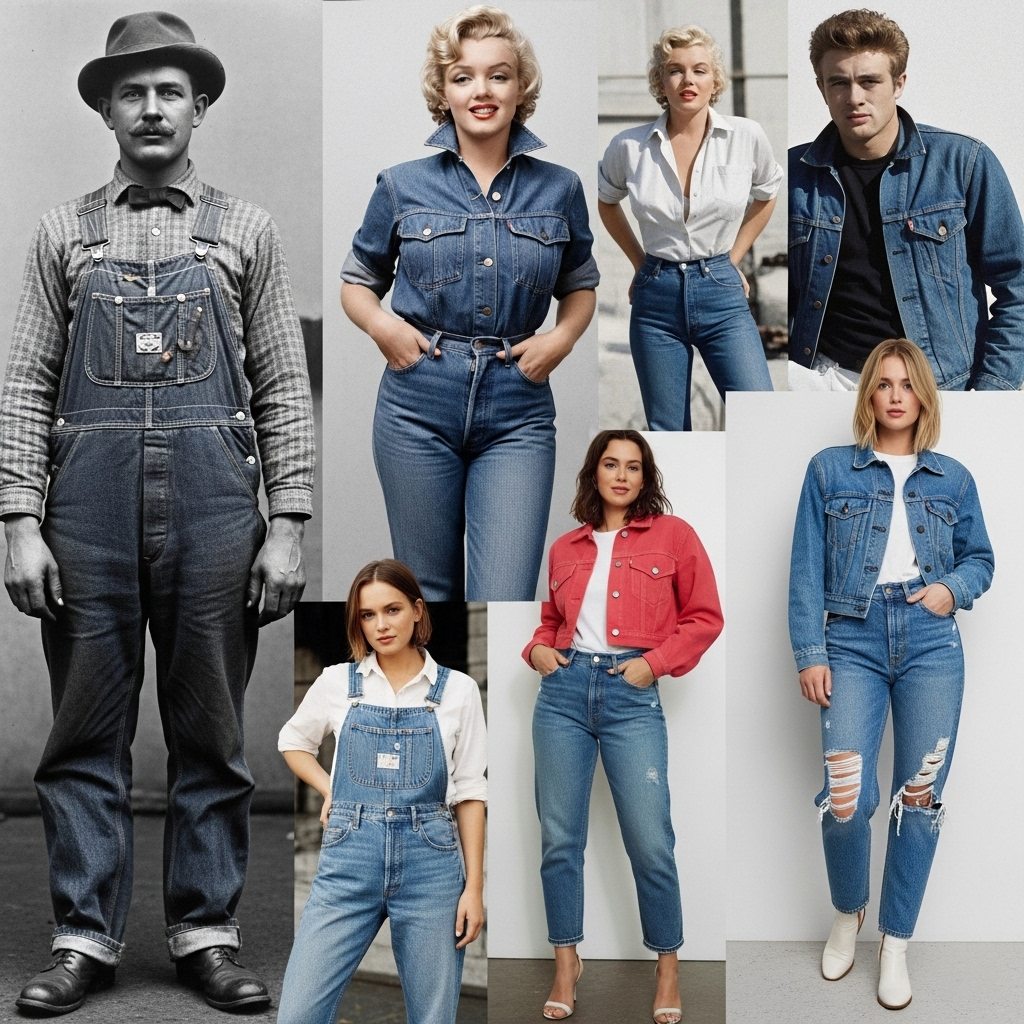Few fabrics have transcended social classes, cultural boundaries, and fashion trends with the enduring power of denim. From its humble beginnings as durable workwear to its current status as a global fashion staple, denim has etched itself into the fabric of society, becoming far more than just a material. It’s a symbol of rebellion, freedom, youth, and timeless cool, profoundly impacting culture, music, and art across the world.
The story of denim begins in the late 19th century, in the American West, where Jacob Davis and Levi Strauss patented copper rivets for reinforcing work pants. Designed for miners, cowboys, and laborers, these “waist overalls” were prized for their ruggedness and longevity. Denim’s durability was its initial selling point, making it the ideal uniform for those who worked hard and needed clothing that could withstand immense wear and tear. This utilitarian origin is crucial to understanding denim’s inherent authenticity and its later appeal as an anti-establishment symbol.
The mid-20th century marked denim’s transformative leap from workwear to cultural icon. Hollywood played a significant role, with stars like James Dean in Rebel Without a Cause and Marlon Brando in The Wild One donning denim jeans as symbols of defiance and cool masculinity. This cinematic portrayal solidified denim’s association with youth rebellion, individuality, and a rejection of conventional norms. Suddenly, jeans weren’t just for manual labor; they were a statement. This era saw denim becoming synonymous with rock and roll, symbolizing a generation’s desire for freedom and authenticity.
As the decades progressed, denim continued its cultural chameleon act. In the 1960s, it became a symbol of counter-culture and peace, embraced by hippies who adorned their jeans with embroidery, patches, and paint, personalizing them as expressions of anti-war sentiment and artistic freedom. The 1970s saw the rise of disco denim, with flared jeans and embellished styles becoming dancefloor staples. The 1980s brought designer denim, elevating jeans from casual wear to a high-fashion item, often paired with power dressing aesthetics. The 1990s embraced grunge and baggy fits, reflecting a more relaxed and introspective youth culture.
Today, denim’s ubiquity is undeniable. It’s found in nearly every wardrobe, from luxury designer collections to fast-fashion retailers. Jeans are worn across all age groups, professions, and social strata, demonstrating their unparalleled adaptability. The sheer variety of denim products—jackets, skirts, shirts, and countless styles of jeans (skinny, straight, bootcut, wide-leg, distressed, dark wash, light wash)—speaks to its chameleon-like ability to absorb and reflect diverse fashion trends. This global adoption has led to denim becoming a truly universal fabric, a common thread in the global fashion narrative.
However, denim’s widespread appeal also comes with challenges. The environmental impact of traditional denim production, particularly its heavy reliance on water and chemicals, has become a significant concern. In response, the industry is seeing a rise in sustainable denim initiatives, with brands investing in water-saving technologies, ethical dyeing processes, and recycled materials. This push towards sustainability highlights denim’s enduring relevance and the industry’s commitment to evolving the fabric responsibly for future generations.
In essence, denim is more than just a fabric; it’s a cultural phenomenon. It has reflected and influenced social movements, youth culture, music genres, and fashion aesthetics for over a century. Its journey from utilitarian necessity to fashion icon is a testament to its unique blend of durability, versatility, and symbolic power. As long as there are stories to tell and identities to express, denim will undoubtedly continue to be a global fabric, weaving its way through the tapestry of human culture.


Leave a Comment
Your email address will not be published. Required fields are marked *